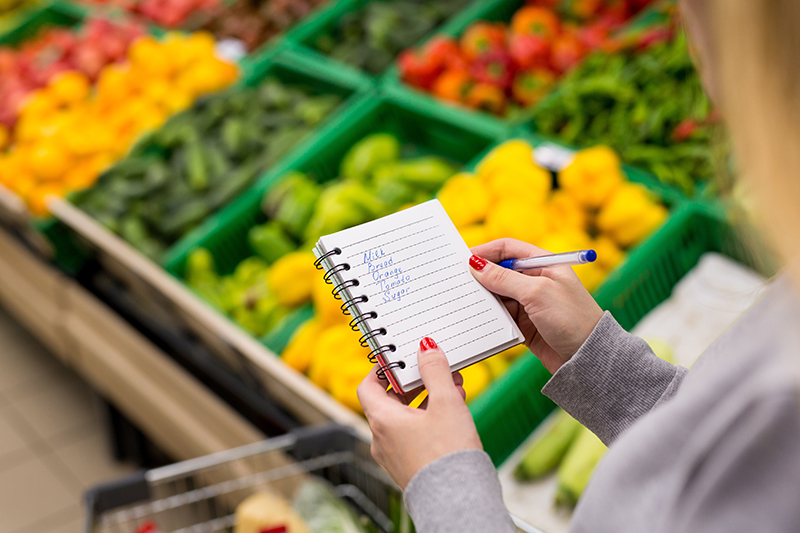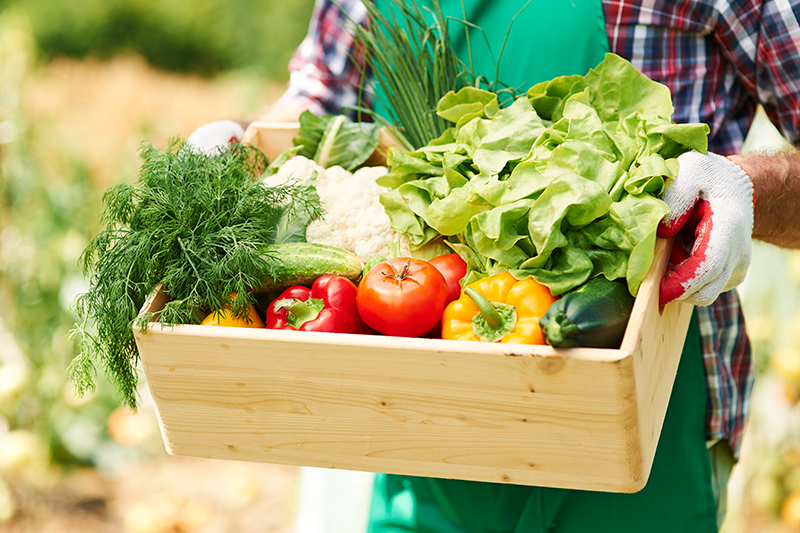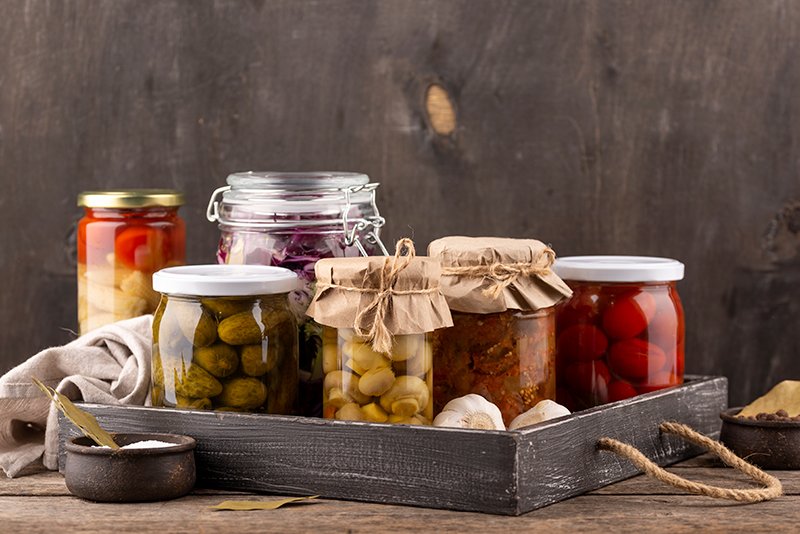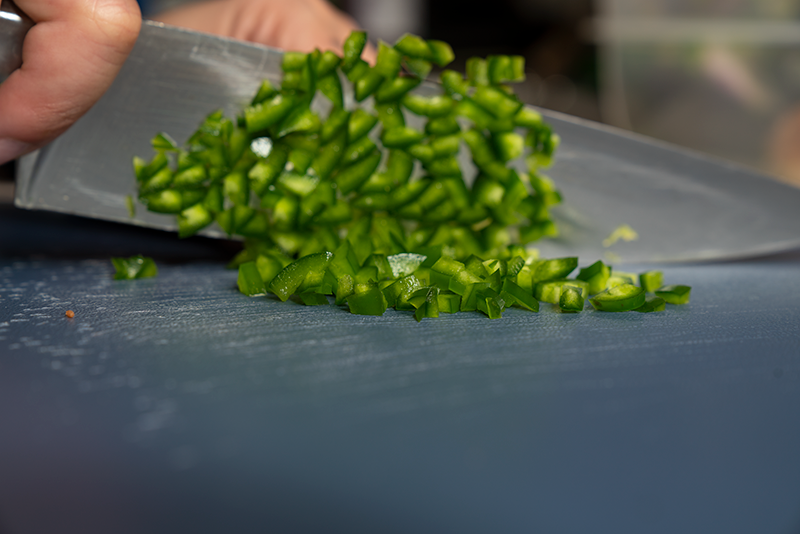
Eating at home rather than eating out is thought of as the tried and true way to save money. But it’s not an absolute given. Throwing anything that catches your eye into your cart will cost you. Lowering your grocery bill requires a little planning and strategy. With that being said, we have 16 tips to help you lower your grocery bill.
Plan Your Purchases

One of the biggest grocery bill sore spots is impulse purchases. So always go to the grocery store with a final list and be willing to stick to it. Think about it. For a single person who spends one hundred dollars, one impulse purchase could jack up a grocery bill by 5-10 percent easily.
Eat Seasonally
Believe it or not, there was a time when you could only find tomatoes, strawberries, and many other fruits and vegetables for a short period of the year. Now grocers have figured out many ways to provide them around the year. But this comes at a cost.
If you track the cost of these items over a year, you’ll notice that they’re drastically more expensive out of season. Eating seasonally, won’t just save you money, your food will taste better and be more nutritionally rich.
Try the Store Brand
Many of us buy brand-name products out of habit. But the store brand often has similar quality/ingredients for a lot less money. Depending on the item, you might even find the exact same product with a different label on it.
Hip2Save has this fun listicle of store brand offerings that are actually your favorite items repackaged for a much lower price. If there’s a must-have item in your pantry, try Googling if there’s an identical generic offering.
Utilize Your Yard

If you have a yard, that could be money on the table. Literally. Like with grocery shopping, this requires a bit of strategizing or you could end up spending $64 to grow one tomato. To save money, you should find vegetables that grow easily in your region and that you’ll enjoy eating.
Vegetables suited to your climate will require less care, less water, and less fertilizer; a winning trifecta if you’re looking to lower your grocery bill. Your friend group might even be able to get together to exchange what you’ve grown.
Start Canning and Jarring

Once you’ve harvested the literal fruits of your labor, you can preserve them by canning and jarring them allowing you to reduce waste. Making your own pickles and canning your own tomatoes have also become popular social activities. Invite your friends over and make it a party.
Know What You Have on Hand
Another handy tip to reduce waste is to make a list of items you already have on hand. Knowing what you have on hand will provide a few benefits. First, you won’t buy redundant items only to find you can’t use them all before they expire. Additionally, you might find out you have most of the ingredients for a dish and just need that missing puzzle piece on your next grocery trip.
Sharpen Your Knife Skills

Pre-cut fruits and vegetables provide a little convenience at a very steep premium. The time savings diminishes quite a bit once you sharpen your knife skills a bit. Watch some YouTube videos and practice chopping . After a little while, you’ll whiz through it and be able to ditch the cost of pre-cut convenience.
Join Your Store’s Loyalty Program
If you haven’t already, you NEED to sign up for your store’s loyalty program. Many promotions like buy-1-get-1 deals or sales up to fifty percent off are only offered to loyalty program members. Not signing up will literally cost you money on every grocery trip.
Plus signing up is free.
Check out Another Store
Yes. Sign up for loyalty programs but don’t be loyal. No store has the best prices on every single item. Try scoping out other grocery stores. For some people, it’ll make sense to switch entirely. For others, a better strategy might be to learn what items are cheaper at different stores and split up your shopping.
For example, if you’re shopping at a mainline grocer and buying lots of Asian ingredients, try buying those items or their equivalents at an Asian grocery store where they’ll most likely be much cheaper. Oppositely, if you’re doing all of your shopping at an Asian grocery store, for example, try buying your staple items like milk, cereal, etc at a bigger store if one is reasonably nearby.
Shop Versatile
One costly source of food waste is buying overly specific (and expensive) ingredients for ONE recipe like several cheeses you might have bought to make lasagna but won’t find a use for afterward. Instead, try to plan recipes that use a few or a lot of the same versatile ingredients.
Hit the App Store
A number of apps will be useful to help you save money on groceries and there are two main groups to look at.
First, if your regular grocery store has an app, download it to be notified of sales or to receive coupons.
Then there are other apps that have different models and work with multiple grocers. They work in different ways such as accumulating points or scanning your receipts to get cash back. Clark.com put together a rundown on their favorite grocery savings apps.
Use Coupons
Clip Coupons
Coupons are an often overlooked source of great deals. The only trouble is finding the right ones and using them correctly. Deals with complicated restrictions can force you to spend even more than you would have originally. Instead, only look for coupons on items you would have bought already or a close substitute with few restrictions.
The Sunday Paper has traditionally been a source of the best coupons but it can be a cost in itself (about $3 a week). If you want to avoid the subscription, try looking in your mail for useful grocery coupons.
Make a Price List
A grocery list is a powerful tool to keep you on track but once you have that, you can estimate or look up the prices of items to make a price list.
Once you have your price list, there are a few ways to use it to save money. You can plan on which stores to buy items at, decide which items can be replaced, or which items you can choose to forego.
Do a Bit of Detective Work
To make your price list even more powerful have more columns to take note of the prices of your favorite items or staples over time. See if you can find any patterns for when they cost less or go on sale. If a pattern emerges, you’ll know when to wait and when you can stock up.
Buy in Bulk When It Makes Sense
Bulk buying is one of the most popular grocery bill-lowering strategies but it can go wrong in a couple of ways. First, buying items that you wouldn’t have bought already is an added cost regardless of whether the item is a good deal. Second, bulk buying perishable items without the right usage plans in place can result in tons of food being thrown out.
Experience has taught us that bulk buying mainly saves money when it comes to items you would have bought already and for items with a longer shelf life.
Take Fewer Trips to the Grocery Store
If possible, try to do your grocery shopping on one day of the week. This will make it easier to understand your weekly and monthly grocery spending. Doing lots of small trips across the week makes you think you’re not spending that much but once you add things up, you’ll see that it can be easy to exceed what you thought you were spending by fifty percent or more.
Bottom Line
It might seem overwhelming to try to do everything on this list at once. So start small and try a few of these strategies at a time and once they become a habit, you can add them onto your grocery savings strategy. Do you have a top tip that you don’t see here? Share it below in the comments!




Validate your login
Sign In
Create New Account